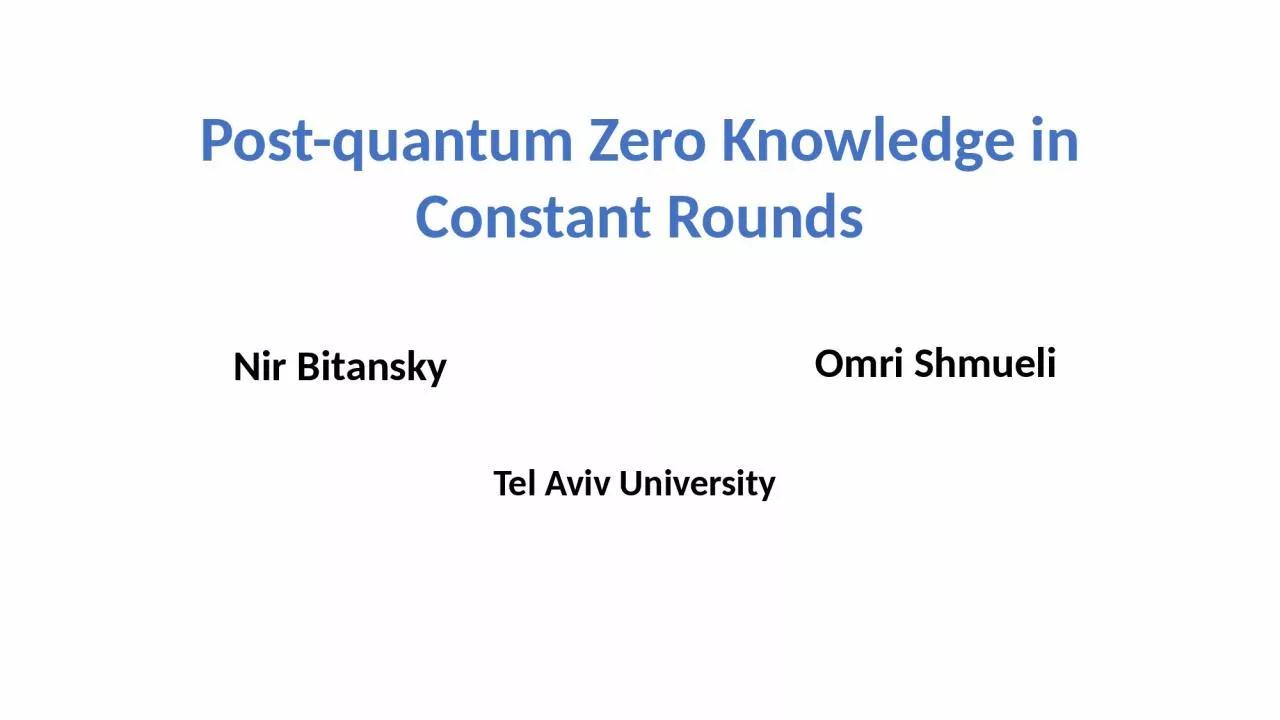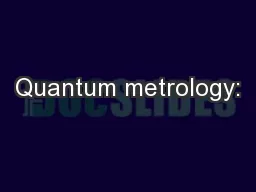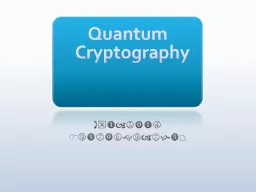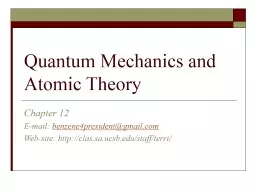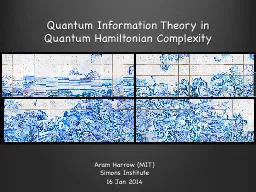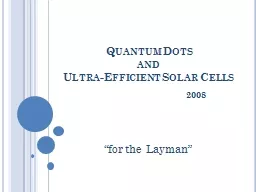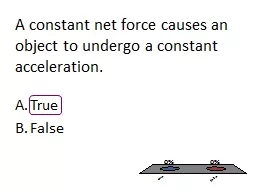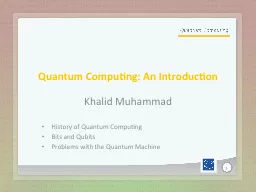PPT-Post-quantum Zero Knowledge in Constant Rounds
Author : eddey | Published Date : 2024-02-02
Tel Aviv University Nir Bitansky Omri Shmueli ZeroKnowledge Protocols Goldwasser Micali Rackoff 85 AcceptReject This work ZK against quantum attacks
Presentation Embed Code
Download Presentation
Download Presentation The PPT/PDF document "Post-quantum Zero Knowledge in Constant ..." is the property of its rightful owner. Permission is granted to download and print the materials on this website for personal, non-commercial use only, and to display it on your personal computer provided you do not modify the materials and that you retain all copyright notices contained in the materials. By downloading content from our website, you accept the terms of this agreement.
Post-quantum Zero Knowledge in Constant Rounds: Transcript
Download Rules Of Document
"Post-quantum Zero Knowledge in Constant Rounds"The content belongs to its owner. You may download and print it for personal use, without modification, and keep all copyright notices. By downloading, you agree to these terms.
Related Documents

